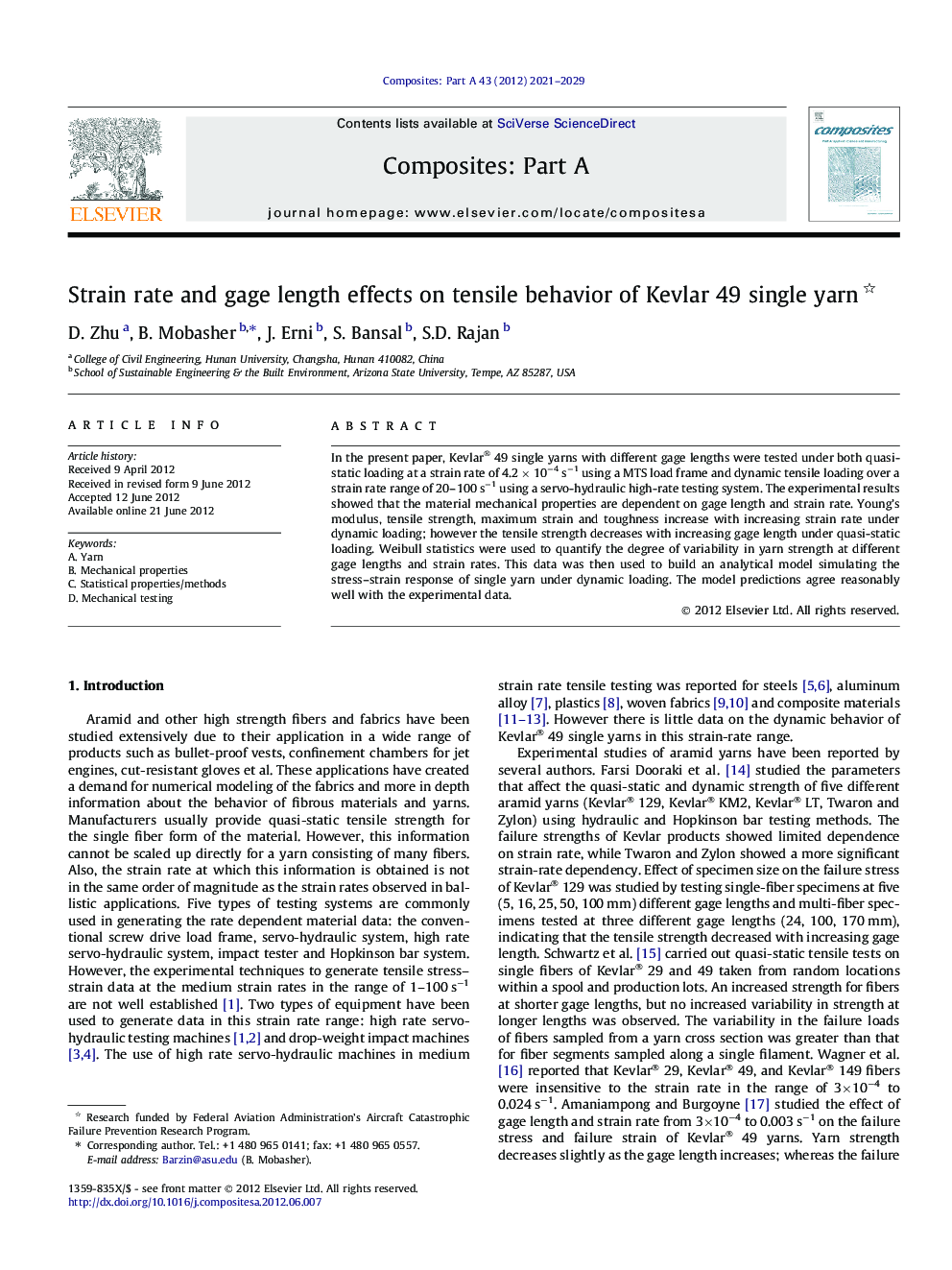| Article ID | Journal | Published Year | Pages | File Type |
|---|---|---|---|---|
| 10627626 | Composites Part A: Applied Science and Manufacturing | 2012 | 9 Pages |
Abstract
In the present paper, Kevlar® 49 single yarns with different gage lengths were tested under both quasi-static loading at a strain rate of 4.2Â ÃÂ 10â4Â sâ1 using a MTS load frame and dynamic tensile loading over a strain rate range of 20-100Â sâ1 using a servo-hydraulic high-rate testing system. The experimental results showed that the material mechanical properties are dependent on gage length and strain rate. Young's modulus, tensile strength, maximum strain and toughness increase with increasing strain rate under dynamic loading; however the tensile strength decreases with increasing gage length under quasi-static loading. Weibull statistics were used to quantify the degree of variability in yarn strength at different gage lengths and strain rates. This data was then used to build an analytical model simulating the stress-strain response of single yarn under dynamic loading. The model predictions agree reasonably well with the experimental data.
Related Topics
Physical Sciences and Engineering
Materials Science
Ceramics and Composites
Authors
D. Zhu, B. Mobasher, J. Erni, S. Bansal, S.D. Rajan,
